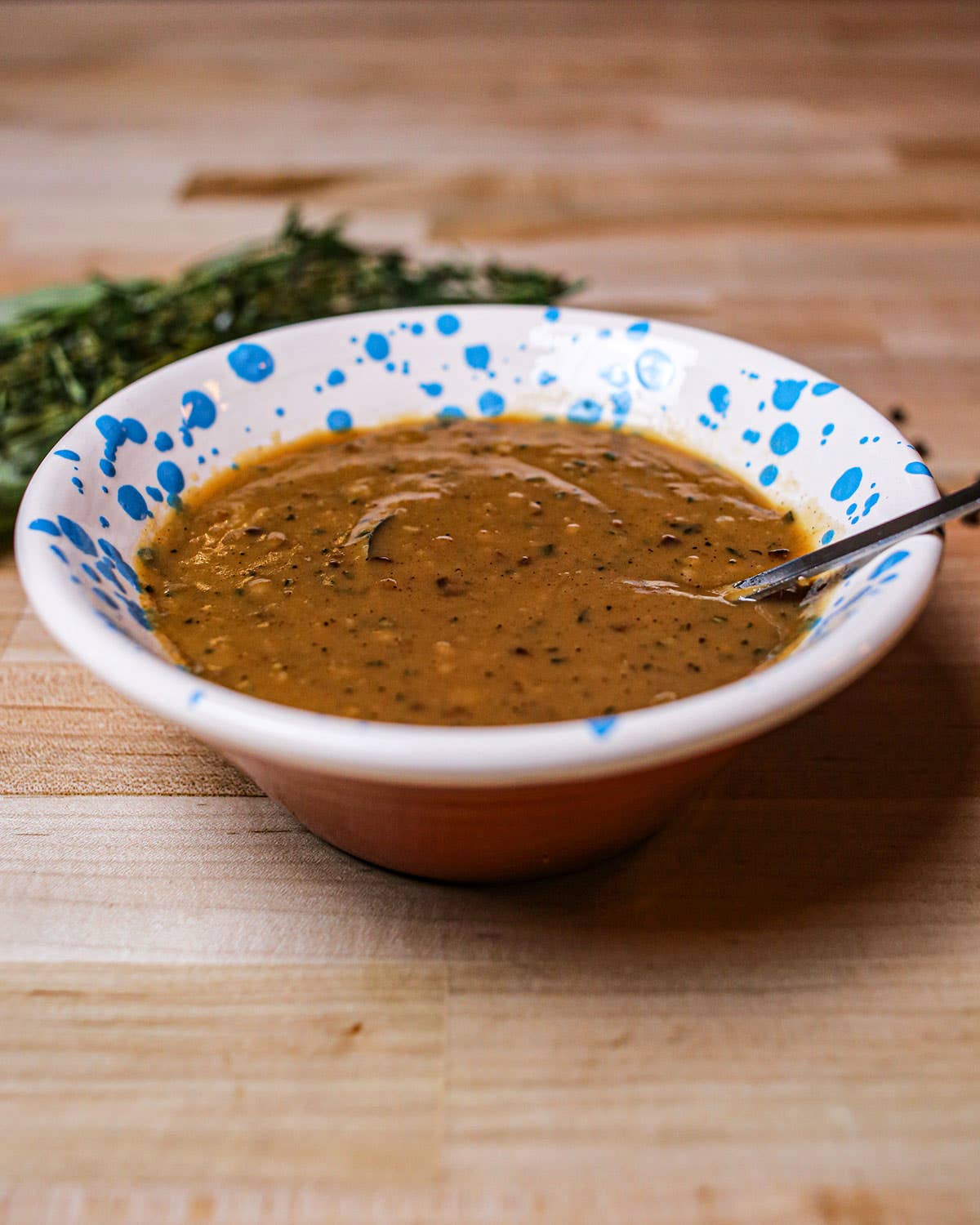
It’s game day: The pies are baked, the turkey is roasted and resting, and the potatoes are mashed. All that stands between you and the perfect Thanksgiving feast is the gravy. Get it wrong, and turkey gravy can be a gloppy, lumpy, or watery disappointment. Get it just right, and the glossy, aromatic sauce will elevate your holiday feast from ho-hum to sublime.
But there’s no need to panic, because fortunately, classic pan gravy is easier than you might think. Ted Rosen, executive chef at Dickson’s Farmstand Meats (SAVEUR’s go-to local butcher shop), walks us through his simple turkey gravy recipe.
What you need:
- Turkey Stock (homemade or a good-quality, low-sodium versions)
- Measuring Cups and Spoons
- Deep Skillet
- Whisk
BEFORE YOU BEGIN
Before you set out to make your gravy, be sure to measure out all of your ingredients ahead of time. The gravy-making process happens relatively quickly, so having everything ready is key. You’ll need 1 quart of good turkey stock—I like to make my own stock, or even supplement it with some of the de-greased pan drippings from roasting the bird—4 tablespoons unsalted butter (or a mixture of half butter, half rendered turkey fat); ¼ cup finely chopped shallot; ⅓ cup all-purpose flour; ½ tsp each chopped fresh rosemary, sage, and thyme; 2 tablespoons dry white wine; 1 tablespoon low-sodium soy sauce or Maggi seasoning; and kosher salt and freshly ground black pepper. If your stock is cold, zap it in the microwave for a minute or warm it in a small pot.
STEP 1: Sweat the aromatics.
In a medium skillet or heavy-bottomed pot set over medium heat, melt the butter (or butter-turkey fat mixture). When the foam just begins to subside, add shallot and cook, stirring frequently, until soft and translucent, 2 to 4 minutes. (Don’t let the shallot take on any color—there will be plenty of richness of flavor from the stock and soy sauce.)
STEP 2: Make a roux.
Timing is key for the following two steps. People are sometimes nervous about roux-thickened sauces, but—so long as you don’t walk away from the stove—they’re actually very easy. Simply whisk the flour into the butter-shallot mixture until thoroughly combined and no dry, white flour is visible. Turn the heat down to medium-low and continue cooking, whisking frequently, until the roux turns very light golden and starts to smell like toasty popcorn, 5–7 minutes. That’s it! You’ve made a blond roux.
STEP 3: Finish the gravy.
Whisk in the rosemary, sage, and thyme and continue cooking until very fragrant, about 1 minute. Whisk in the wine and soy sauce and continue cooking, whisking vigorously, until the alcohol evaporates and a pancake-batter-like paste forms. Vigorously whisk in about a third of your warm stock until no lumps remain. (Whisking thoroughly here is important because this is your best opportunity to prevent a lumpy gravy.) Whisk in another third of your stock and continue cooking, whisking continuously, until smooth. Bring to a simmer, adjusting the heat as needed to prevent the gravy from coming up to a full boil; cook until the gravy thickens, about 5 minutes.
STEP 4: Adjust the thickness and season to taste.
If you prefer a thicker gravy, you can stop here. Otherwise, keep adding the stock a little bit at a time until the desired texture is achieved. Remember: Your gravy will continue to thicken as it cools on the table. (And if the gravy “splits,” whisk in a bit more hot stock, a tablespoon at a time, until the sauce comes back together.) Finally, adjust the seasoning to taste with salt and black pepper.
Final Thoughts
If the idea of making gravy at the last minute stresses you out, don’t worry: This turkey gravy recipe can be made up to three days in advance. Store it in an airtight container in the fridge and simply reheat gently in a small pot over low heat just before serving. (When making gravy ahead of time, plan to have a little bit of extra stock on hand to adjust the thickness or “fix” the gravy if it splits during the reheating process.)
Keep Reading
Continue to Next Story










